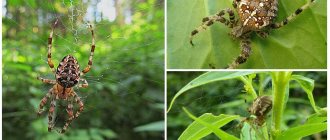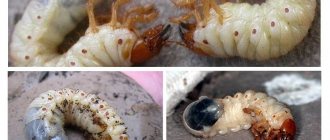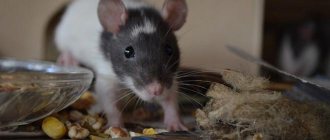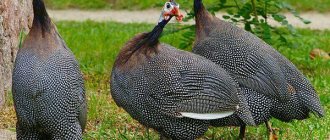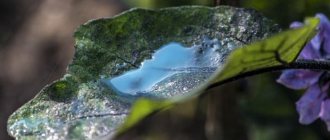Description and features
A close relative of the ground beetle, the bombardier beetle is a very interesting creature. He populated the entire planet, except for the most polar regions. The most famous beetles from the subfamily Brachininae (brachininae) have an average size of 1 to 3 cm.
They have hard elytra, painted in dark colors, and the head, legs and chest usually have the same bright color - orange, red, terracotta. The back may have patterns in the form of brown streaks and spots. The arsenal includes three pairs of legs and whiskers up to 8 mm long.
The bombardier beetle in the photo looks pretty ordinary, but it's just a shell. Its most interesting and important characteristic is the ability to shoot towards the enemy from the glands of the back of the abdomen a poisonous chemical mixture, independently heated to high temperatures.
This fact was the reason to call the insect a bombardier. Not only does the liquid shoot out at tremendous speed, but the process is accompanied by a pop. Scientists from various fields are very interested in the perfect mechanism of action of this weapon. Therefore, they are trying to study it in detail.
The nature of the formation of the “mixture of gases” emerging from the bombardier beetle has not yet been fully studied
The posterior glands alternately produce hydroquinone, hydrogen peroxide and a number of other substances. Separately, they are safe, especially since they are stored in separate “capsules” with thick walls. But at the moment of “combat alert,” the beetle sharply contracts the abdominal muscles, the reagents are squeezed into the “reaction chamber” and mixed there.
This “explosive” mixture generates intense heat; with such heating, its volume increases sharply due to the release of the resulting gases, and the liquid is ejected through the outlet channel, as if from a nozzle. Some manage to shoot accurately, others simply spray the substance around.
After the shot, the insect needs time to “recharge” - to restore its reserves of the substance. This process takes different times in different species. Therefore, some species have adapted not to immediately expend the entire “charge”, but to carefully distribute it over 10-20, and others over a larger number of shots.
Physics in the animal world: the bombardier beetle and its “weapon”
Bombardier beetle of the species Brachinus crepitans (photo: beatlename.ru) Bombardier beetles are represented by the subfamilies Brachininae and Paussinae (ground beetle family). Bombardiers are found everywhere, except in Antarctica. The more famous subfamily is Brachininae. Scientists have studied its representatives best. The size of beetles of this subfamily varies greatly. The maximum size of a bombardier beetle is 3 cm. They look ordinary, there are no bright elytra or particularly large mandibles. But there is something else - the ability to shoot poisonous liquid at the enemy, the temperature of which reaches 100 ° C. Moreover, the liquid itself is remarkable, not to mention the “shooting” process.
What kind of liquid is this?
The beetles shoot with a mixture of hydroquinones and hydrogen peroxide.
This mixture is produced by two symmetrical endocrine glands. Substances produced by the glands enter a special tank with reinforced walls. There are also smaller reservoirs containing catalase and peroxidase. Their walls are also reinforced and they are connected to the central tank. The muscles that are responsible for opening and closing the “trunk” are tightly compressed. The chambers with reagents are similarly closed. When the beetle is calm, the liquids do not mix, all “flasks” are tightly closed. Once the beetle needs to shoot, the walls of the large tank are compressed, and substances from the smaller chambers are squeezed out into the main “reactor”. Here, enzymes react with hydrogen peroxide, resulting in the formation of atomic oxygen. This is a very strong oxidizing agent that reacts with hydroquinones, oxidizing them to quinones (scientists managed to determine the chemical composition of these substances - it is 2-methyl-1,4-benzoquinone).
Both reactions take place with the release of a large amount of heat - the mixture heats up to 100 °C. Let us not forget that all this does not happen in a glass vessel like a flask or test tube, but in the body of a living being. As soon as oxygen also appears in the main chamber, the volume of the substance increases, and this entire mixture is ejected through the holes at the tip of the insect’s abdomen. Individual shots are controlled using a special membrane. If the pressure in the tank exceeds a certain level, the membrane opens, the mixture is released, and the pressure decreases. The membrane closes. After this, the process is repeated, and so on until the reagents in the chambers of the beetle’s abdomen are completely depleted. Pulsation is necessary so that the reservoir, where the main reaction occurs, has time to cool down before the next shot.
The tip of the insect's abdomen is very mobile. When “shooting”, thanks to this mobility, the beetle can aim, and very accurately. He is able to “shoot” under himself, behind himself, above his head, to the right, left and up. Bombardiers of a number of species shoot liquid not as a jet, but as a series of shots, each lasting from 8 to 17 ms. The liquid ejection speed reaches 10 m/s. Keeping in mind that the beetle’s enemy is usually very close, we can say that the “projectile” overtakes the enemy almost instantly. An ant, a larger beetle, or even a frog that is about to grab the bombardier usually does not have time to do anything.
To study the firing process, Eric Arndt and his colleagues at the Massachusetts Institute of Technology used a complex system. It consists of a synchronous X-ray emitter and a high-speed camera, which is capable of taking up to 2000 frames per second.
Other beetles can also release repellent liquid. In particular, ground beetles of a number of species are able to throw out caustic liquid in different directions. But no reaction occurs inside their abdomen - this liquid is produced by special glands. In this case there is neither heating to high temperature nor significant pressure.
It is also interesting that male and female bombers can “shoot” equally accurately. But their devices for firing are somewhat different, although the reaction itself, the tanks and everything else are absolutely the same.
How does the bomber himself survive?
This is a complex question to which entomologists (and not only them) have been trying to find an answer for many years. The thing is that the chambers with reagents and the main tank are covered with a special fabric. This fabric is not only resistant to all chemicals involved in the reaction, but also withstands high temperatures. Plus, its thermal conductivity is low, so the heat does not spread throughout the beetle’s body; only the main reservoir heats up. The reservoir does not expand when fired.
Bombardier Beetle and Aviation
The beetle's organ system, where the chemical reaction takes place and the fluid is released, may be important to humans.
First, data from studying the beetle's pulsed firing process could be useful to engineers designing various engines, including jet engines for aircraft. Perhaps the technology of precise and fast injection will help ensure the restoration of the engine after an accidental stop. Scientists still have a lot to figure out; now the main attention of specialists is focused on the chamber where the oxidation reaction of the reagents occurs. Studying the structure of this chamber can help create a heat-resistant material that is resistant to active chemicals. It will be useful in industry, science, and military affairs.
What else?
The bombardier beetle is a favorite among creationists. They argue that such a complex, specialized system could not have arisen through evolution. Well, if so, then the beetle appeared suddenly and immediately as a divine creation. Now scientists have been able to find intermediate stages in the evolution of the bombardier beetle, where the “weapon” gradually becomes more and more complex. And modern representatives of bombardier subfamilies are “armed” in different ways. In some beetles, guidance is achieved using the elytra rather than the abdomen. Other bombardiers emit only a slightly heated liquid, and a number of species generally emit only a caustic liquid without heating. Their cameras are also different - you can trace the development of the “laboratory” from a simple system to a complex one. So there can be no talk of any “divinity” of the beetle.
Kinds
Actually, the bombardiers include one subfamily of ground beetles - Brachininae (brachinins). However, there is also a subfamily within the family that is capable of shooting a hot mixture from the subcutaneous glands in the abdominal posterior region. These are Paussinae (paussins).
Bombardier is from the ground beetle family, so the beetles are almost identical in appearance
They differ from other arthropods of their family in that they have unusual and rather wide antennae: in some they look like large feathers, and in others they look like a thin disk. Paussinas are also known for the fact that they most often live in anthills.
The fact is that the pheromones they secrete have a calming effect on ants and suppress their aggression. As a result, both beetles and their larvae receive tasty and nutritious food from the anthill's reserves, in addition, uninvited guests eat the larvae of the hosts themselves. They are called myrmecophiles - “living among ants”.
Both subfamilies do not interbreed with each other; perhaps they even had different ancestors. Among ground beetles, many more insects secrete such mixtures, but both of the above groups have in common that only they have learned to “warm up” the odorous liquid before shooting.
In the paussin subfamily, 750 species are currently known in 4 tribes (taxonomic categories between family and genus). Bombardiers were identified in the Paussin tribe Latreya, which includes 8 subtribes and more than 20 genera.
The brachinine subfamily includes 2 tribes and 6 genera. The most famous of them:
- Brachinus is the most studied and widespread genus in the bombardier family. It includes Brachinus crepitans, the nominate bombardier beetle, whose defense device is perhaps the most remarkable of all. Hot toxic liquid is ejected with a loud crash and lightning frequency - up to 500 shots per second. In the process, a poisonous cloud is created around it. Entomologist and biologist Carl Linnaeus began studying these beetles from him, who subsequently began to systematize these arthropods. The larvae of the cod bombardier lead a parasitic lifestyle, looking for a suitable object for their development in the upper layer of soil. This behavior of the bombardier beetle is characteristic of almost all species of the family. Outwardly, it looks standard - black, hard elytra, and the head, chest, legs and antennae are bright red. Body length from 5 to 15 mm.
- Mastax is a bombardier beetle native to tropical regions of Asia and Africa. Its elytra are painted with transverse beige stripes intersecting one wide longitudinal brown one. The general background is black. The head, chest and antennae are brown, the paws are dark.
- Pheropsophus - this bombardier beetle lives in the tropics and subtropics of all parts of the world. Larger than the two previous relatives, the wings are black, ribbed, decorated with brown figured spots; the head and chest of the insect have the same color. They are also decorated with spots in the middle, only in a charcoal shade. The antennae and paws are beige-coffee. Looking at this beetle, you might think that this is an ancient decoration made of genuine leather and agate stone - its shell and wings shine so beautifully, highlighting the nobility of the color. In Russia, only one species of this beetle is found in the Far East - Pheropsophus (Stenaptinus) javanus. Instead of brown shades, its color contains sandy beige, which adds elegance to the appearance.
Bombardier beetle: what are the main characteristics
There are 2 types of scorers. The beetle is distributed everywhere except Antarctica. The individual is of medium size. The maximum length reaches 3 cm. The elytra are predominantly dark in color.
The belly, head, chest and limbs have a brighter color. The insect is nocturnal. During the day, the bombardier is in cover. The beetle can't fly.
During the day, bombardiers gather in small groups. Beetle larvae parasitize other individuals. Some subspecies live in anthills.
The bombardier's appearance is unattractive and inconspicuous. The body is oblong. The body is protected by a dense shell. The insect moves quickly, but cannot fly at all. There are three pairs of legs, which are symmetrically arranged. The beetle has long antennae that can reach 8 cm.
In case of danger, the beetle shoots gas
Nutrition
Bombardier beetles are twilight and night hunters. Their medium-sized eyes are also adapted to this lifestyle. During the day they hide under snags, stones, in the grass or among fallen trees. The diet consists almost entirely of protein foods.
Bombardiers lay their larvae in the top layer of soil
This means that they feed on other living creatures - the larvae and pupae of other beetles, snails, worms and other small creatures that live in the top layer of soil, and carrion. They are not capable of flight, so they move only on their paws.
Thanks to their flattened shape, they easily make their way among fallen leaves, running around their hunting grounds. They orient themselves with the help of antennae, which can replace almost all their senses - hearing, vision, smell and touch.
They grab their prey with tenacious front and middle paws with jagged edges. The victim cannot escape from the deadly embrace, and after some resistance he calms down and resigns himself to his fate. However, these predators also have many enemies, some of them have learned to perfectly defend themselves against the “shots” of insects.
For example, birds shield themselves from the “shot” with their wings, some rodents jump on top of the insect and press its deadly weapon into the ground, and the seemingly harmless horsefly larva buries the beetle itself in damp soil, which absorbs the poisonous liquid.
However, the bombardier beetle defends itself even after defeat. They watched as a beetle swallowed by a frog shot while inside, and the poor amphibian, out of fear and internal burn, spat out the fighter.
Reproduction and lifespan
The development of the beetle from eggs to adults is also interesting. The process of fertilization, as in many arthropods, occurs with the help of one of the segments of the hind leg; the male releases the amount of sperm that the female will need throughout her life.
Actually, this is where its function ends, sometimes the segment comes off and gets stuck, but the process has already started. The female gradually, not immediately, consumes the seminal fluid, storing it in a separate tank. Before each serving of eggs, she releases a small amount into the egg sac.
She lays fertilized eggs in an earthen chamber, and tries to roll each egg into a separate ball and place it on some hard surface not far from the reservoir. And there are at least 20 eggs in the clutch. After a few days, white larvae appear from the eggs, which darken after a few hours.
The larvae find prey in the soil in the form of a pupa of a diving beetle or mole cricket, eat it from the inside from the head and climb there. There they pupate. Already from this cocoon after 10 days a new bombardier emerges. The entire process takes 24 days.
Sometimes the female makes both a second and a third clutch, if the climate allows. However, in cool places the matter is limited to only one. The saddest part of this story is the lifespan of this amazing insect. It is usually only 1 year. Less often, males manage to live longer than 2-3 years.
Reproduction
After mating, the female bombardier beetle lays eggs. To do this, select a safe place, which can be located in a pile of decaying stems and foliage of plants, as well as in dirt. From the laid eggs, larvae appear at a certain time, leading a parasitic lifestyle. Most often, the main food for the larvae are mole cricket pupae hidden in moist soil. As they grow, they turn into pupae, which go through several stages of molting and after that, the insects become adults.
Beetles of this species are carnivores.
Harm from a beetle
This beetle cannot cause serious harm to humans. Although it is not recommended to grab particularly large representatives with your bare hands. Still, it is quite possible to get a small but noticeable burn. In this case, you need to wash off this liquid as quickly as possible. The most unpleasant thing is to receive such a jet in the eyes. Decreased or even loss of vision is possible. It is necessary to rinse your eyes copiously and immediately call an ambulance.
Also, do not let your pets – dogs, cats, etc. – come into contact with the beetle. They will try to swallow the insect and get injured. And yet, we can rather say that the bombardier beetle is not a dangerous insect, but a useful one.
Thanks to his feeding habits, the area is cleared of larvae and caterpillars. They cause significant damage to leaf beetles, which consume young shoots. In areas where pest beetles live, the bombardier can be an excellent orderly.
Coleoptera brethren
Almost all carnivorous beetles have the ability to secrete liquids that are unpleasant to predators. Unlike other representatives of ground beetles, brachininae and paussinae heat up their “charge” and can conduct targeted fire.
The most studied are Brachininae, in particular, the cod bombardier. It is a unique representative of the Coleoptera family. Carl Linnaeus, a great biologist who devoted his life to work on the classification of flora and fauna, was the first to describe and study insects. The crackling bombardier is a beetle capable of firing up to 500 shots per second. The cannonade is accompanied by a loud sound and the release of toxic fog. It has a modest appearance for such outstanding abilities: reddish-red legs and head, body length less than 1 cm, dark elytra, colored in blue-green tones.
Although the beetle does not pose a serious threat to humans, it is better to refrain from closely examining the individuals. Once in the eye, a stream of hot poison can completely deprive vision. If you pick up an insect, you risk getting small but very painful burns.
Fighting a beetle
Humanity has not been seriously puzzled by the methods of combating bombardier beetles. Firstly, because they really do not pose a real threat. And secondly, they manage to coexist quite loyally with us, irritating only entomophobes (people with a fear of beetles).
In addition, they are very interesting to study; some still believe that they are a technical invention of creatures from another planet. The main control methods are standard aerosols and chemicals against adult insects and their larvae.
Interesting Facts
- The temperature of the chemically active substance released by the bombardier beetle can reach more than 100 degrees Celsius, and the release speed can be up to 8 m/s. The length of the jet reaches 10 cm, and the accuracy of hitting the target in many species is impeccable.
- The beetle's defense system, upon closer examination, turned out to be a prototype of the air-breathing pulse mechanism of the famous V-1 (V-1), the "weapon of retribution" used by the Germans during World War II.
- Entomologists have noticed that representatives of many species of bombardier beetles prefer to gather in large clusters. It is believed that in this way they strengthen their defense. A simultaneous salvo from multiple “guns” can cause more damage, and beetles ready to fire can give a respite to those who need to “reload.”
- The bombardier beetle's firing device is so interesting and technically complex that there is reason to think about the creation of the world. There is an opinion that such a “mechanism” could not have arisen by chance as a result of evolution, but was conceived by someone.
- The invention of self-restarting internal combustion engines in the event of one failure during flight is not far off. This will be helped by revealing the secrets of the bombardier beetle's firing mechanism.
Appearance of a bombardier beetle
The appearance of this beetle is not at all attractive.
The body, which has a reddish-red color, can reach up to 10 mm in length. The head also has the same color as the body.
The fenders can be either blue-black or blue-green. The black antennae of this insect grow up to 8 mm. Like many insects, this beetle has 6 legs that are attached to the thoracic region of the body.
The fenders can be either blue-black or blue-green.
